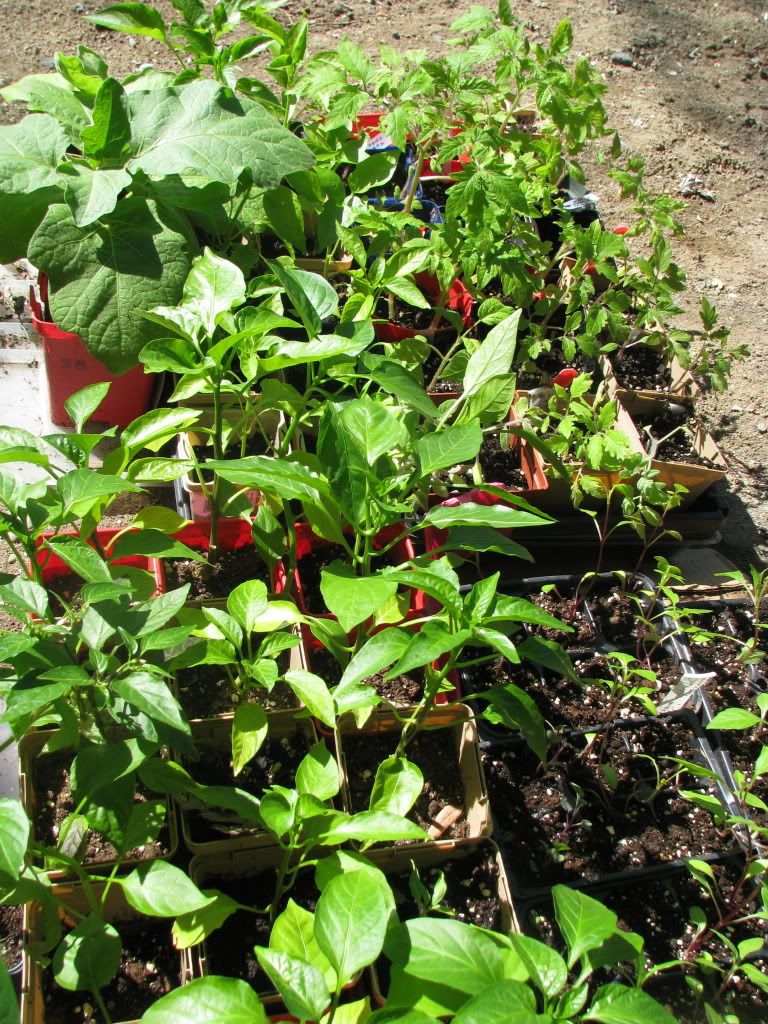
Plant us! Plant us! Tomatoes and other solanaceae kin waiting for a place in the ground.
You may have read that last frost for Ottawa is May 6th but the vast majority of folks don't put out tender plants until near at the end of May. I have to assume that 05/06 date comes from actual data and some years it is true. However, as the weather has demonstrated spring is not always straight-forward.
Last Frost Date: is the magic day when statistically the likelihood of a frost killing off your tomato plants is lower. It is also the pivot point where you can switch from sowing lettuce and start sowing pumpkins too. However, according to the farmer's almanac, the average date of last frost is the date when there is the likelihood of frost drops to 50%. Not very comforting if you ask me. Waiting a week or so, lowers the possibility further hence the reliance on the May two-four weekend as a planting out date. Of course, that doesn't mean your plants won't get singed if you wait diligently for that date either.
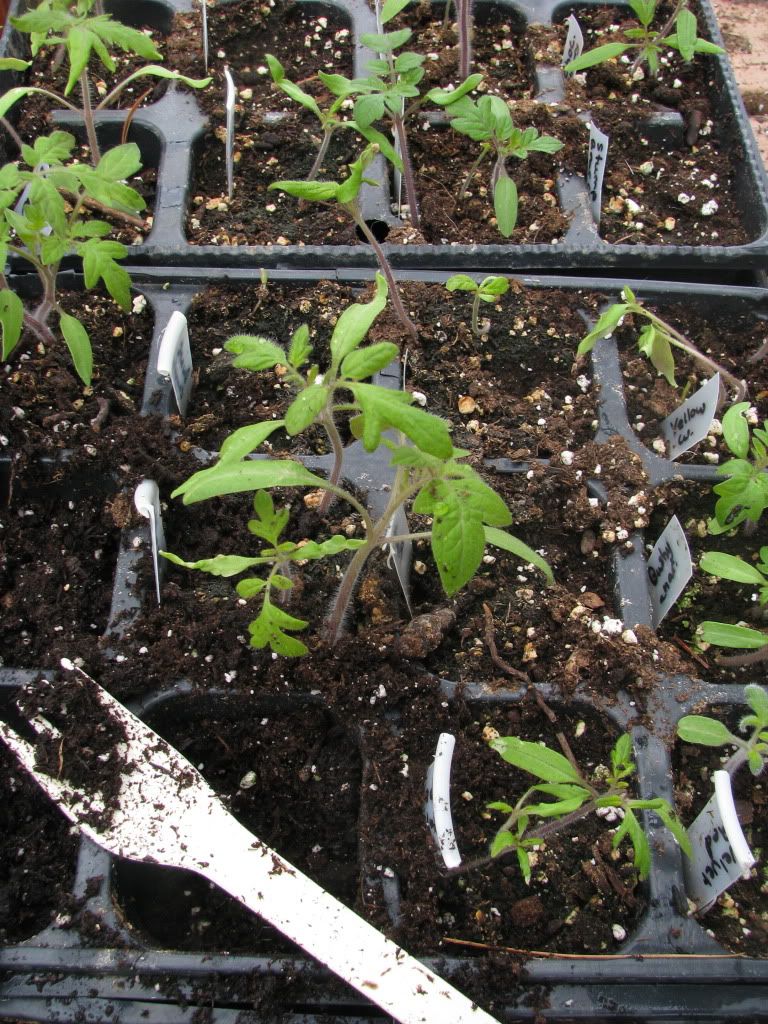
Earlier in the year, potting up tomato seedlings.
Heavy and Light Frosts: The average last frost date refers to light frosts with temperatures between -2C and 0C. I do not plant out tender starts like tomatoes and peppers until after May 14th assuming that the weather seems to have settled into a pattern of lows above 4C* at night for the next two weeks. Even so, I have row covers waiting to put over plants should the weather suddenly change.
But there are another set of bookends for the season and these are the average dates of moderate frosts which are in the range of -4C to -2C. I wait until after these before planting out anything in the spring not protected by a cold frame or other season extension device. Just the other week, we had temperatures in this range (I'm sure you remember) and I was hastily blanketing four inch high peas with a leaves and overturning pots on shoots of some perennial herbs that came up. It might have been unnecessary but gosh darn it, -12C with the windchill in late April? Come on! Below these temperatures is severe or killing frost that at this time of year can damage plants and burn buds.
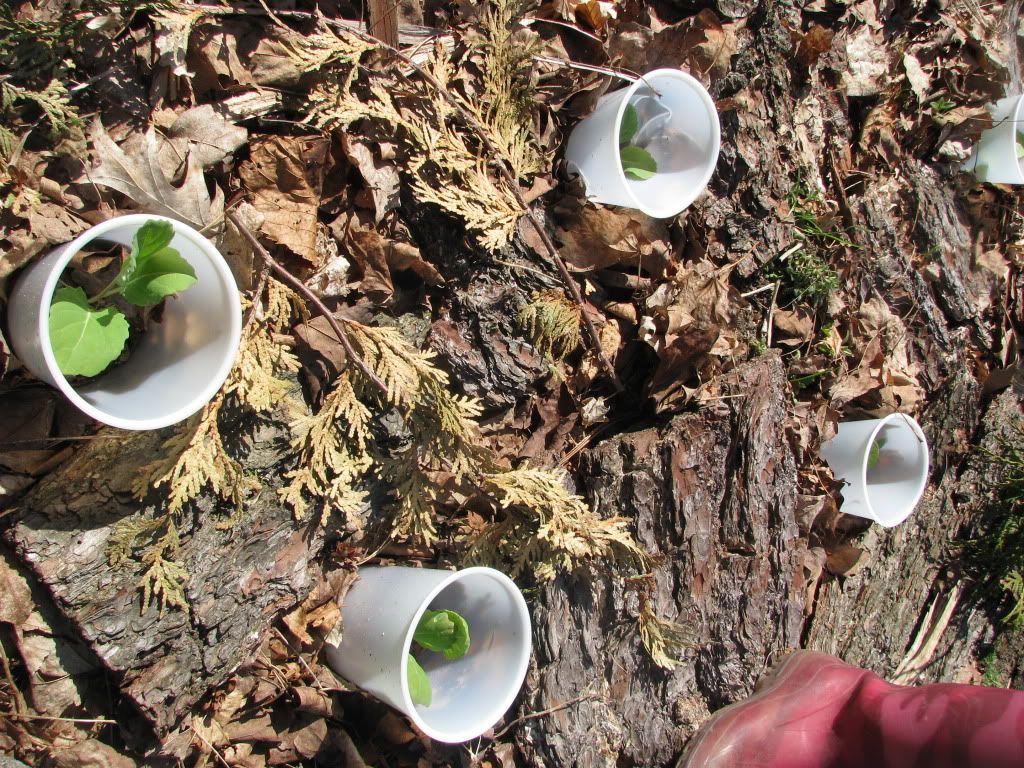
Oddly angled picture of brussel sprout starts planted in mini-climate modifiers / cutworm collars, i.e. bottomless cups.
So outdoor planting** and growing season for me goes from moderate frost to moderate frost which (and I'm guestimating here) seems to run sometime mid-April to sometime near the end of October but yearly variations are many! This year, I planted peas out in March as the snow left us early bringing me to the next subject.
Soil temperatures: Just as important as the air temperature, the soil temperature will help determine whether your seed will happily germinate or sit and sulk or even worse rot. Now some plants require a period of cold to germinate (see stratification - nice article) or at least aren't harmed by it. I have always gotten away with planting my tender starts, seeds and so on as soon, as the air temperature allowed because I have very lightly textured soil - read sand trap - that warms up early in the spring. If you have heavy clay, there might be a lag time between when the air is ready and when the soil is friendly. This has lead to some discordance with gardening friends as I plant peas as soon as the snow melts whereas they wait a little longer telling me if they did that, the peas would rot. The usual solution is to wait until the ground is ready to be worked which just means isn't too wet. Try the squeeze test to find out but remember your soil type will also affect the results with clay soil more likely to hold together in a ball.
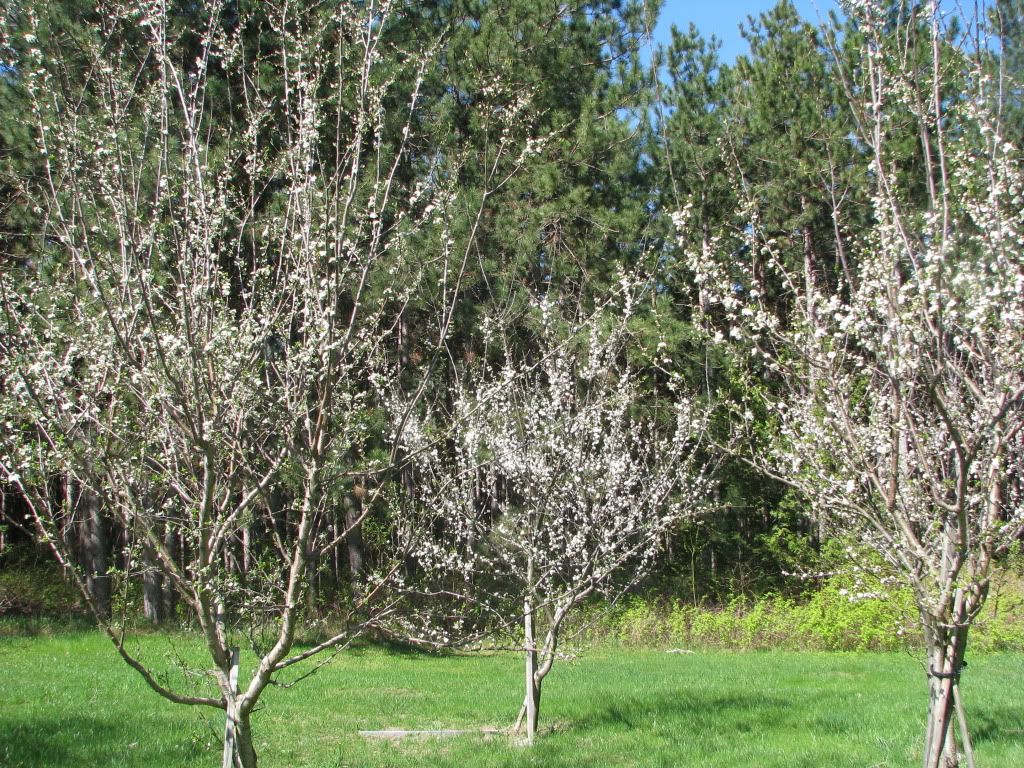
Plums in flower.
But back to heat: I've read all sorts of interesting recommendations such as 'if you can can sit nude comfortably on the ground' then it's time to start xyz. I rarely put my butt on the garden bed to test but soil temperature is one of my big considerations when I plant out heat lovers like sweet potatoes and melons. In fact, soil warming tricks aside, they recommend putting out sweet potato slips a few weeks after last frost. You can use a thermometer, but I normally just lay my nude hand on it.
Some of those little edible darlings won't crack a seed shell unless they have been bathed in the sunny warmth of 20C or more whereas others like the mustards pop out of the ground at the mere hint of a warm day in my experience. So if the seed package says plant when the soil has warmed, do so. The method upon which you determine soil warmth is up to you.

Sweet potato slips rooting in water.
Special considerations: Even if the air is fair and the soil is a weedy mess of germination, you may want to take into account the microclimate around your yard. Cold air will roll down into little dips around your yard and the north side of the house will remain cooler and shadier. Likewise, raised beds will warm quicker in the spring. Use all these variations to your advantage by matching them with plants that like their special characteristics such as bolting greens in cooler corners and peppers in hot spots.
The size of the seedling is important too. You may be itching to get some overgrown starts that are attempting to climb out of their pots into the ground sooner rather than later. Depending on the weather, you might test your luck or you may just need to pot up (transplant into a bigger pot). However, the opposite is true too. Very small transplants sometimes do not do well when moved from their well tended indoor trays to the big bad world outside. Wait until they are husky seedlings that are not root bound and before they prematurely flower (unless of course that was your sneaky plan - more on that some other time).
Watching the Weather: When the wondrous date of tomato planting approaches, keep your eyes on the skies. If the longterm forecast seems promising, see if it is because of the direction of the wind or cloud cover. If Eastern Ontario is basking in a persistent southern wind perhaps all will be well but if there are some temperatures in the near future hovering around 4C on cloudy nights, then you might want to hold off for a couple more days. If the cloud cover fails to materialize then clear skies can drop the temperature significantly meaning a frost.
Back to rain: The most kind days to plant out starts have mist, light rain or at least cloud cover. Pouring (not torrential) rain would probably work too but be less pleasant for you. If it is going to be glaring bright sun over the next few days after planting, be sure to stand guard with your watering can. Oh and I hope you hardened off*** everything first too.
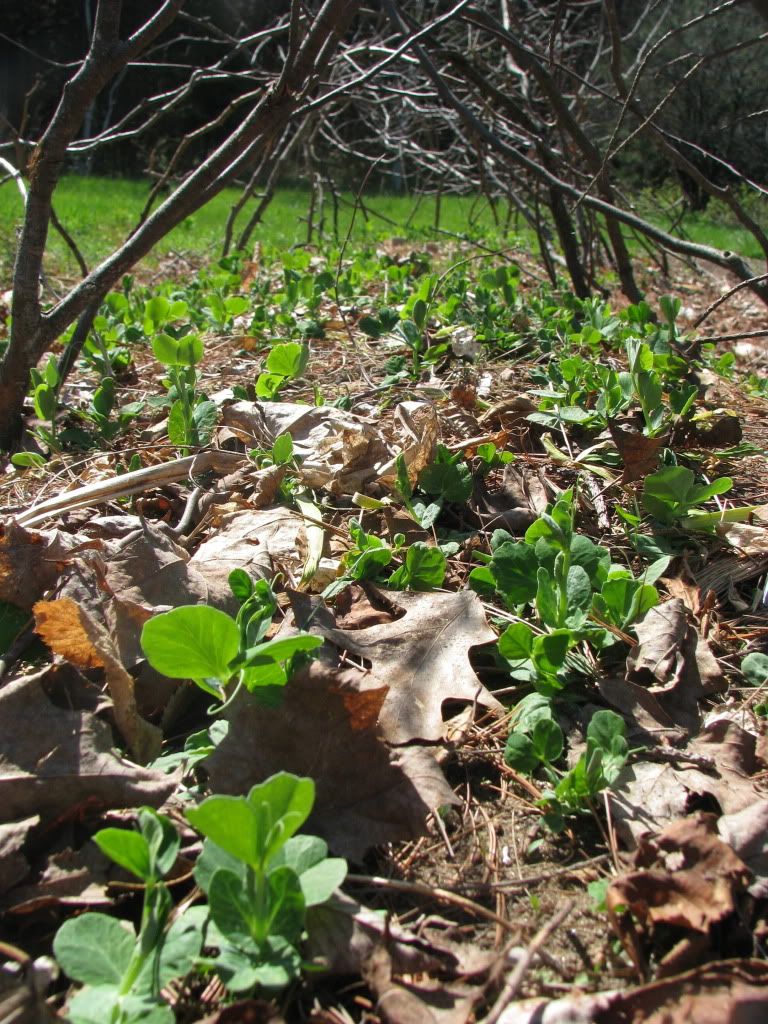
Peas after surviving a night with a windchill of -12C.
So I usually wait until the air and soil are at the right temperature (more or less), the future looks promising and rain is in the air. Yes, it is a lot to keep track of but that's half the fun of gardening isn't it?
* Why 4C: I read somewhere that the temperature is measured at around 4feet from ground level and that at ground level, the temperature could drop as much as 1C per foot so that light frosts are possible when temperatures are at 4C or below. That's my excuse anyhow. That and I figure it gives me a bit of a buffer in case the predictors are having an off day. However, I have friends the claim that there tender plants are fine at temps as low as 2C. Of course, it will also depend on whether there is a brisk wind mixing the air, soil temperature, humidity and so on.
** Season extension planting lasts longer, often right into December and starts up again in earnest in March. So if I am harvesting from a polytunnel or cold frame, there are usually only a little over two months that I can't get stuff from the ground most years.
*** Hardening off is the gradual exposure of your indoor seedlings to wind and full sun. It is best down gradually over a week or more before planting out. Cloudy days or a spot in dappled shade is a great place to start.

1 comment:
Our last frost this year was in the first week of April. The "normal" one is the end of April, but in recent years it has been earlier. I still wouldn't plant something like a tomato or basil out before mid May though unless I was willing to lose them (ie have extras in the wings to transplant) or I was going to protect them. Just like the last week cool drizzly weather is common in May. Mid May is pretty safe because you can see the long range forecast and see if it is going to trend lower or not.
Post a Comment